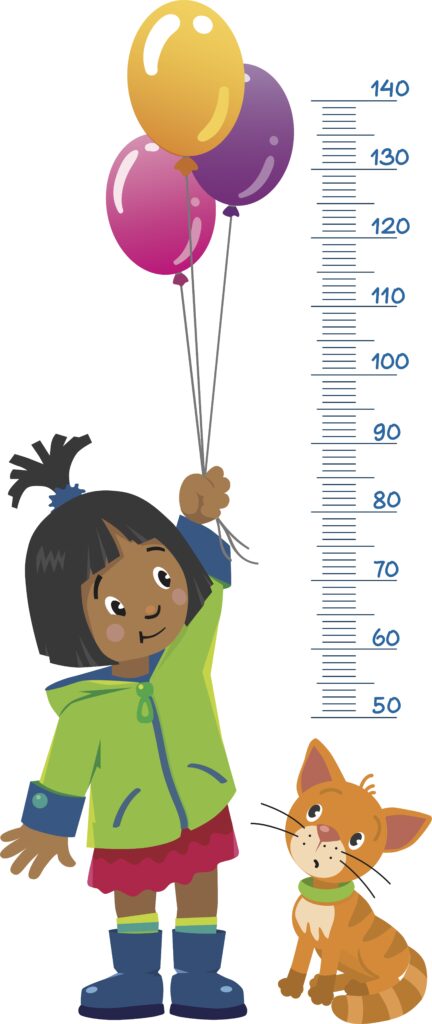As your child continues to grow, you may be wondering how tall they’ll be when all is said and done. Will you have a towering NBA player on your hands, a diminutive Olympic gymnast, or a kiddo who falls somewhere in between?
The first step is to note your own height (and your partner’s height) because genetics will play an important role in deciding your child’s final height.
Shocker: Tall parents typically produce tall children and short parents tend to produce short children. (Obviously, there are exceptions to this rule.)
The second step is to recall when you (and your partner) went through puberty. You may have repressed all memory of this awkward time, but this information will help you predict when your child will go through puberty and have their big growth spurts.
The third step is use to one of 3 methods to “guesstimate” your child’s final height. Note: These methods aren’t perfect, but they’re better than nothing! Here they are…
The Top 3 Methods for Predicting Adult Height

Method #1 – Double It: Kids are usually about HALF of their adult height at 2 years of age. You can therefore predict your child’s eventual height by doubling their height at 24 months.
Method #2 – Note Your Child’s Height Percentile and Extrapolate: If your child is consistently measuring at the 75th percentile for height after “finding their curve,” they’ll probably be close to this percentile as an adult.
If you look at the averages for adult height in the U.S., this means that a child who’s regularly at the 75th-percentile for height will be about 5’11” (if male) and 5’5” (if female).
Method #3 – Calculate Your Child’s “Midparental Height:” This method involves plugging Mom and Dad’s height (in inches) into the following equations.

Note: These predicted heights have a margin of error of about 2 inches on either side.
Not a Fan of Math? No problem. Use the midparental height calculator here.
PediaTrivia

- The average adult male in the U.S. is 5’9.”1
- The average adult female in the U.S. is about 5’4.”2
A Parting PediaTip & The Bottom Line
Try not to compare your child’s height to that of other kids.
Why? Because kids grow at different rates and have growth spurts at different times. For example, a child with short parents may be “tall” in 1st grade, then peter out in middle school. A late bloomer, on the other hand, may be “short” in 8th grade, but “tall” by their senior year. If you have any concerns about your child’s height, call the pediatrician and ask them to go over your child’s growth chart with you.








